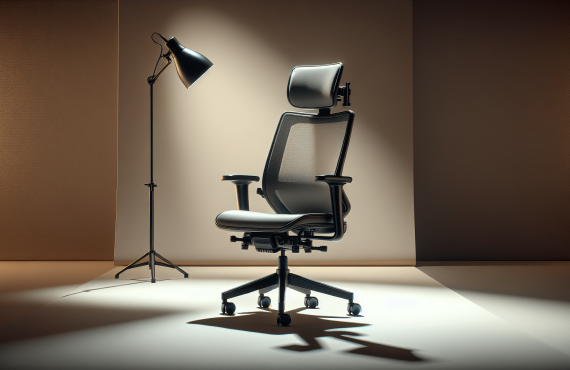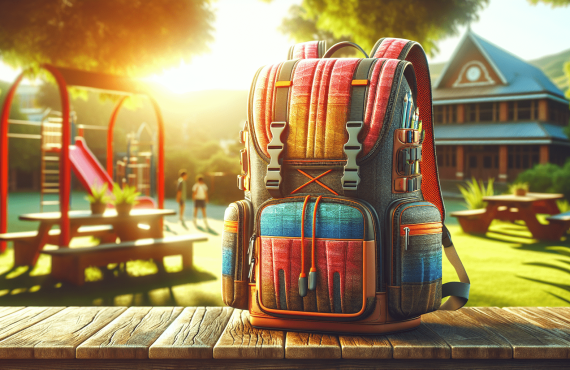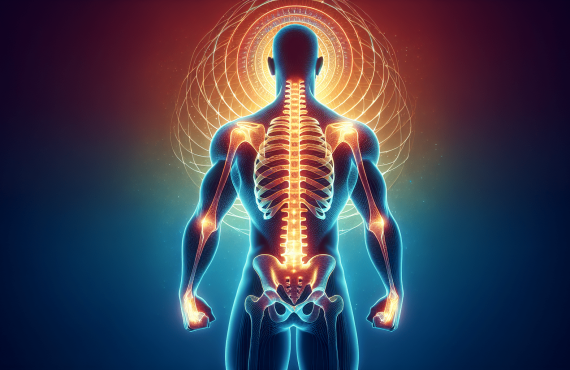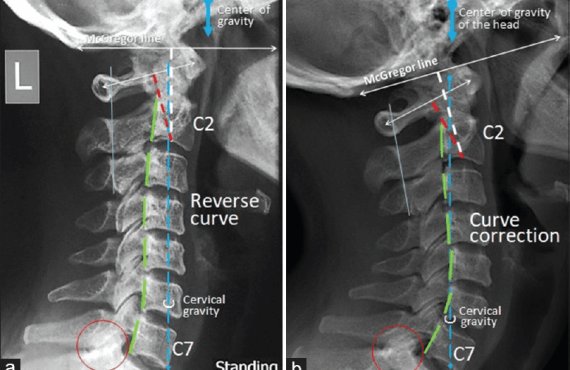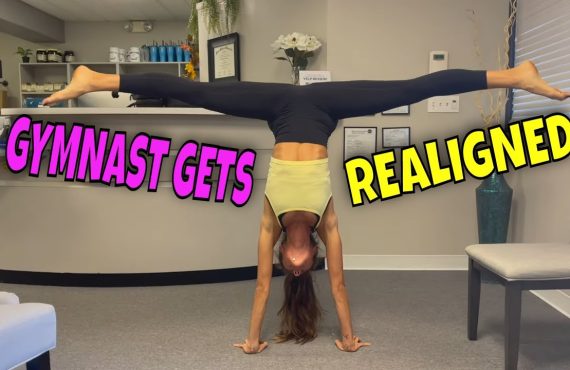Are you an office worker who spends long hours sitting at a desk? If so, you may be experiencing discomfort or pain in your back, neck, or other areas of your body. In this article, we will explore some important chiropractic considerations specifically tailored to office workers. We’ll discuss how chiropractic care can help alleviate your pain and improve your overall wellness. So, if you’re tired of dealing with discomfort and want to start feeling better, keep reading to discover how Dr. Craig Henry and Dr. Aaron Hixon at Henry Chiropractic in Pensacola, Florida, can assist you in achieving a healthier and pain-free life.

Table of Contents
Correcting Posture
Understanding the Impact of Poor Posture
Poor posture can have a significant impact on your overall health and well-being. It can lead to muscle imbalances, joint dysfunction, and a range of musculoskeletal issues. When you maintain a slouched or hunched posture for extended periods, it puts excessive strain on your muscles and ligaments, causing them to become fatigued and potentially leading to pain and discomfort.
Importance of Correcting Posture for Office Workers
For office workers who spend long hours sitting at a desk, maintaining good posture is crucial. Sitting in an improper position for hours on end can result in back, neck, and shoulder pain. By correcting your posture, you can alleviate existing discomfort and prevent further problems from developing. Proper posture can also improve your breathing, digestion, and overall energy levels, allowing you to feel more comfortable and focused throughout the workday.
Chiropractic Techniques to Improve Posture
Chiropractic care offers effective techniques to help improve your posture. Chiropractors are trained to identify postural imbalances and provide personalized treatments to address them. Through spinal adjustments, chiropractors can realign your spine, relieving tension and promoting proper alignment. They may also recommend exercises and stretches to strengthen your core muscles, which play a crucial role in maintaining good posture.
Desk Ergonomics
Common Desk Ergonomic Issues
Many office workers face common ergonomic issues that can contribute to poor posture and discomfort. One such issue is having an improperly set up workstation. Sitting in a chair that is too high or low, using a desk that is too high or low, or having a monitor positioned incorrectly are all factors that can lead to postural problems. Additionally, using a keyboard and mouse that are not ergonomically designed can strain your wrists and fingers.
Optimizing Desk Setup for Better Spinal Alignment
To optimize your desk setup for better spinal alignment, start by adjusting the height of your chair so that your feet are flat on the floor and your knees are at a 90-degree angle. Ensure that your desk is at a height where your elbows are also at a 90-degree angle when resting on the desk. Position your monitor at eye level, directly in front of you, to avoid straining your neck. Use a keyboard and mouse that are ergonomically designed to support your wrists and minimize strain.
Adjusting Chair and Monitor Position
Proper chair and monitor positioning are key to maintaining good posture. When sitting in your chair, make sure your back is supported, and use a cushion or lumbar support if needed. Adjust the height and angle of your monitor so that you can see it clearly without having to tilt your head forward or backward. This will help prevent strain on your neck and promote a more neutral spinal alignment.
Importance of Regular Breaks and Stretching
Taking regular breaks and incorporating stretching into your daily routine is essential for maintaining good posture. Sitting for prolonged periods can cause muscle stiffness and tightness, leading to postural imbalances. Set reminders to take short breaks every hour or so, during which you can stand up, stretch, and move around. Simple stretches targeting your neck, shoulders, back, and hips can help relieve tension and improve circulation.
Preventing Neck and Shoulder Pain
Causes of Neck and Shoulder Pain in Office Workers
Neck and shoulder pain are common complaints among office workers, often resulting from poor posture and prolonged periods of sitting. Slouching or hunching forward at your desk can strain the muscles and ligaments in your neck and shoulders, leading to discomfort and stiffness. Additionally, the repetitive movements involved in typing and using a mouse can contribute to muscle imbalances and tension in these areas.
Chiropractic Treatments for Neck and Shoulder Pain
Chiropractic care offers various treatments for neck and shoulder pain. Chiropractors can perform manual adjustments to realign your spine, relieving pressure on the affected areas. They may also use techniques such as spinal mobilization or soft tissue therapy to reduce muscle tension and promote healing. Your chiropractor can develop a personalized treatment plan based on the specific cause of your neck and shoulder pain.
Exercises and Stretches to Relieve Tension
In addition to chiropractic treatments, incorporating specific exercises and stretches into your routine can help relieve tension in your neck and shoulders. Simple exercises like chin tucks, neck rolls, and shoulder blade squeezes can help strengthen weak muscles and improve flexibility. Stretching your neck, shoulders, and chest regularly throughout the day can also promote relaxation and relieve discomfort.
Managing Back Pain
Understanding Common Causes of Back Pain
Back pain is a prevalent issue for many office workers, often arising from prolonged sitting, poor posture, and muscular imbalances. Sitting for long periods can cause the muscles of your back to become weak and stiff, leading to pain and discomfort. Additionally, improper lifting techniques, stress, and underlying medical conditions can also contribute to back pain.
Chiropractic Techniques for Treating Back Pain
Chiropractic care offers effective techniques for treating back pain. Chiropractors can perform spinal adjustments to realign your vertebrae and alleviate pressure on the affected nerves. These adjustments can help reduce inflammation and promote healing in the affected area. Chiropractors may also incorporate other therapies, such as massage or ultrasound, to further relieve pain and promote relaxation.
Home Remedies and Lifestyle Changes to Support Back Health
In addition to chiropractic treatments, there are several home remedies and lifestyle changes you can implement to support the health of your back. Practicing good posture throughout the day, maintaining a healthy weight, and engaging in regular exercise can all help strengthen your back muscles and reduce the risk of pain. Incorporating activities like yoga or Pilates into your routine can also improve flexibility and promote spinal alignment.

Addressing Carpal Tunnel Syndrome
Overview of Carpal Tunnel Syndrome in Office Workers
Carpal tunnel syndrome is a common condition among office workers that occurs when the median nerve, which runs through the carpal tunnel in the wrist, becomes compressed. This compression can result in symptoms such as pain, numbness, and tingling in the hand and fingers. Factors such as repetitive motions, improper wrist positioning, and underlying health conditions can contribute to the development of carpal tunnel syndrome.
Chiropractic Approaches to Treating Carpal Tunnel Syndrome
Chiropractors can offer effective approaches to treating carpal tunnel syndrome. They can perform adjustments to the wrist and hand to help restore proper alignment and reduce compression on the median nerve. Chiropractors may also use techniques such as ultrasound or electrical stimulation to promote healing and reduce inflammation in the affected area. They can provide recommendations on ergonomic modifications and assist with exercises to alleviate symptoms.
Hand and Wrist Exercises for Prevention and Relief
Engaging in hand and wrist exercises can help prevent and relieve symptoms of carpal tunnel syndrome. Simple exercises such as wrist stretches, finger spreads, and squeezing a stress ball can help improve flexibility and strengthen the muscles in your hand and wrist. Taking regular breaks to rest and stretch your hands throughout the workday can also help reduce the risk of carpal tunnel syndrome.
Reducing Headaches and Eye Strain
Contributing Factors to Headaches and Eye Strain
Headaches and eye strain are common issues faced by office workers, often resulting from staring at a computer screen for extended periods. The glare from the screen, improper lighting, and poor ergonomic setup can strain your eyes and lead to headaches. Additionally, prolonged sitting and poor posture can contribute to tension headaches and muscle discomfort in the neck and shoulders.
Chiropractic Methods for Alleviating Headaches
Chiropractors can utilize various methods to alleviate headaches. Spinal adjustments can help improve blood flow and release tension in the neck and upper back, reducing the frequency and intensity of headaches. Chiropractors may also provide nutritional advice and recommend supplements to support overall health and reduce the risk of migraines or tension headaches.
Eye Exercises and Relaxation Techniques
In addition to chiropractic care, incorporating eye exercises and relaxation techniques into your routine can help reduce eye strain and alleviate headaches. Taking frequent breaks to focus on objects at varying distances can relax your eye muscles and reduce fatigue. Eye relaxation exercises, such as palming or gently massaging the temples, can also provide relief. Implementing these techniques throughout the day can promote healthier eyesight and minimize headaches.
Boosting Overall Well-being
Role of Chiropractic Care in Enhancing Overall Health
Chiropractic care plays a crucial role in enhancing overall health and well-being. By addressing imbalances in the musculoskeletal system, chiropractic adjustments can optimize nervous system function and promote the body’s natural ability to heal and function optimally. Chiropractors take a holistic approach to health, considering how various factors, such as posture, nutrition, and exercise, contribute to overall well-being.
Benefits of Regular Chiropractic Adjustments for Office Workers
For office workers, receiving regular chiropractic adjustments can offer numerous benefits. Chiropractic care can help alleviate the musculoskeletal issues that arise from prolonged sitting and poor posture, reducing pain and improving mobility. Regular adjustments can also boost energy levels, enhance immune function, and improve sleep quality, helping you feel your best throughout the workday and beyond.
Nutrition and Exercise Recommendations
In addition to chiropractic care, maintaining a healthy diet and engaging in regular exercise are essential for promoting overall well-being. Consuming a balanced diet rich in nutrients can support the body’s healing processes and reduce inflammation. Incorporating exercise into your routine, such as strength training, cardiovascular activities, and flexibility exercises, can enhance muscle strength, improve posture, and boost your overall energy levels.
Stress Management
Understanding the Link between Office Work and Stress
Office work can often be a source of stress due to demanding deadlines, high workloads, and long hours of sedentary activity. Prolonged stress can have detrimental effects on both physical and mental health, contributing to muscle tension, fatigue, and reduced focus. Recognizing the link between office work and stress is crucial in implementing effective stress management strategies.
Chiropractic Techniques for Stress Relief
Chiropractors can utilize techniques to help manage and reduce stress. Through spinal adjustments, chiropractors can release tension and promote relaxation in the body. These adjustments can improve nerve function and stimulate the release of endorphins, which are natural pain-relieving and mood-boosting chemicals. Chiropractors may also provide guidance on stress management techniques, such as deep breathing exercises or meditation.
Mental Health Strategies for Office Workers
In addition to chiropractic care, implementing mental health strategies is essential for managing stress in the office. Engaging in activities such as mindfulness, journaling, or talking to a therapist can help reduce stress levels and promote overall well-being. Prioritizing self-care, setting boundaries, and maintaining a healthy work-life balance are also crucial in managing stress and maintaining good mental health.
Workstation Exercises
Importance of Exercise During Office Hours
Incorporating exercise into your daily routine, even during office hours, is crucial for maintaining overall health and well-being. Regular movement can help counteract the negative effects of prolonged sitting, reducing muscle stiffness, improving circulation, and boosting energy levels. Exercise during office hours can also enhance focus, productivity, and overall job satisfaction.
Recommended Exercises for Office Workers
There are several exercises that office workers can perform at their desks to stay active and counteract the effects of sitting for long periods. Desk stretches, such as shoulder rolls, neck stretches, and wrist flexion and extension, can help relieve tension and increase blood flow. Taking short walks or incorporating simple strength exercises, like squats or lunges, throughout the day can also provide significant benefits.
Incorporating Stretching and Movement into Daily Routine
In addition to specific exercises, incorporating stretching and movement into your daily routine is essential for maintaining flexibility and preventing muscle imbalances. Taking short breaks to stand up, stretch your legs, and move around can help relieve muscle stiffness and improve circulation. Stretching your back, hips, and legs regularly can also promote proper alignment and reduce the risk of discomfort or injury.
Choosing the Right Ergonomic Products
Evaluating Ergonomic Office Chairs
Choosing the right ergonomic office chair is crucial for maintaining proper posture and preventing back and neck pain. When evaluating ergonomic office chairs, consider features such as adjustable seat height, lumbar support, and adjustable armrests. Look for chairs that provide adequate support to the natural curves of your spine and promote a neutral sitting position.
Selecting Proper Keyboard and Mouse
Using ergonomic keyboard and mouse setups can help prevent wrist and hand discomfort. Look for keyboards and mice that offer wrist support and allow your hands and wrists to remain in a neutral position while typing or using the mouse. Ergonomic keyboards are designed to reduce stress on the hands and fingers, minimizing the risk of repetitive strain injuries such as carpal tunnel syndrome.
Investing in Wrist Supports and Lumbar Pillows
For added support and comfort, consider investing in wrist supports and lumbar pillows. Wrist supports can help maintain proper wrist alignment while typing, reducing the risk of strain or discomfort. Lumbar pillows can provide additional support to your lower back, promoting better spinal alignment and preventing back pain. These ergonomic accessories can make a significant difference in your overall comfort and well-being during long hours of desk work.
In conclusion, maintaining correct posture is crucial for office workers to prevent discomfort and promote overall health and well-being. By understanding the impact of poor posture and implementing chiropractic techniques, desk ergonomics, exercises, and stress management strategies, office workers can improve their posture, reduce pain, and boost their overall well-being. Remember to prioritize your health by incorporating these practices into your daily routine and seek professional assistance, such as the experienced chiropractors at Henry Chiropractic in Pensacola, Florida, to address any specific concerns or conditions. With proper care and attention, you can enjoy a pain-free and productive work life.


























